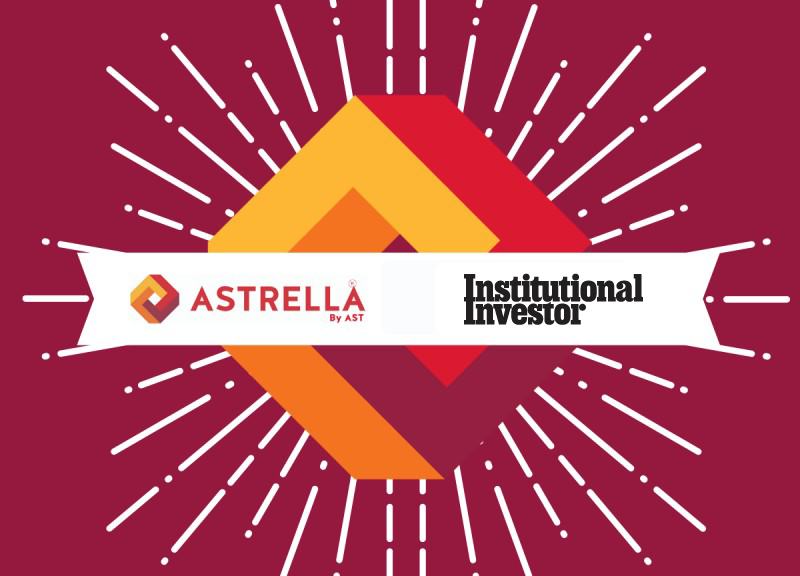In business valuation, startups present a unique set of challenges. Unlike mature businesses with a track record of financial performance, startups are often characterized by high growth potential, limited financial data, and uncertain futures. Traditional valuation methods may not adequately capture the value of these emerging ventures.
This blog post delves into advanced equity valuation techniques tailored explicitly for startups. We will explore various methodologies considering early-stage companies’ unique characteristics and risks. These techniques include the EBITDA formula, the Scorecard Method, the Black-Scholes Option Pricing Model, the Monte Carlo Simulation, the Risk Factor Summation Method, the Valuation-by-Stage Method, and the Cost-to-Duplicate Method.
What’s the Difference Between Startup Valuation and Mature Business Valuation?
When valuing a business, it’s crucial to consider the stage of its development. With their established track record of revenue and profitability, mature companies differ significantly from startups, which are in their early stages of development and may not have any income or profits yet. Mature businesses typically have a clear path to profitability, while startups may have a more uncertain future due to their limited operating history. Furthermore, mature companies usually have a more extensive customer base and a more established brand than startups.
On the other hand, startups often have limited assets and a weaker financial position than mature businesses. This is because they are just starting and have not had the time to accumulate significant assets or build a robust financial foundation. As a result, mature businesses are generally considered less risky investments than startups. These differences highlight the need for specialized valuation techniques that consider startups’ unique characteristics and risks.
The EBITDA Formula
The EBITDA formula is a measure of a company’s overall financial performance. It is calculated by taking a company’s net income and adding back interest, taxes, depreciation, and amortization. EBITDA is often used to measure a company’s cash flow, excluding non-cash expenses such as depreciation and amortization.
For startups, EBITDA can be a valuable metric for valuing the company, as it measures its financial performance without considering non-cash expenses. However, it is essential to note that EBITDA is not a perfect measure of a company’s financial performance, as it does not consider its capital structure or cost of capital. Additionally, companies can manipulate EBITDA to make them appear more profitable than they are.
Despite these limitations, EBITDA can be useful for valuing startups, primarily when used with other valuation methods. When valuing a startup, it is essential to consider various factors, including the company’s business model, target market, management team, and financial performance. EBITDA can provide valuable insights into a company’s financial performance, but it should not be the only factor considered when valuing a startup.
The Scorecard Method of Startup Valuation
This method is a versatile equity valuation technique that assigns values to various qualitative and quantitative factors that are relevant to a startup’s valuation. Factors the Scorecard Method considers include market size, product or service quality, management team, and competitive advantage. Each factor is assigned a weight based on its importance, and the total weighted score is used to determine the startup’s valuation.
The Scorecard Method is relatively simple to apply and can be used to value startups at any stage of development. However, it can be subjective and may not always accurately reflect the actual value of a startup. One of the main challenges of the Scorecard Method is determining the appropriate weights to assign to each factor. If the weights are not chosen carefully, the valuation may be biased towards certain factors and may not accurately reflect the overall value of the startup.
Despite these challenges, the Scorecard Method can be useful for valuing startups, especially in the early stages of development when limited financial data is available. By considering a wide range of factors, the Scorecard Method can provide a more comprehensive and accurate valuation than traditional methods that rely solely on financial data.
The Black-Scholes Option Pricing Model
This pricing method is a mathematical formula that can determine the fair market value of a call option on a non-dividend-paying stock. The model considers several factors, including the stock’s current price, the strike price of the option, the time until the option expires, and the risk-free interest rate.
The Black-Scholes model assumes that the stock price follows a geometric Brownian motion, which means the price continuously fluctuates. The changes in the stock price are normally distributed. The model also assumes that the risk-free interest rate is constant and that there are no transaction costs or taxes.
Under these assumptions, the Black-Scholes model provides a closed-form solution for the fair market value of a call option. The formula for the Black-Scholes model is:
The Black-Scholes model is a powerful tool for valuing call options. However, it is essential to note that the model is based on several assumptions, which may not always be 4accurate in practice. For example, the stock price may not always follow a geometric Brownian motion, and the risk-free interest rate may not always be constant. As a result, the Black-Scholes model may not always provide an accurate estimate of the fair market value of a call option.
The Monte Carlo Simulation and How it Is Used for Startup Valuation
The Monte Carlo simulation is a powerful tool to value startups by incorporating uncertainty and risk into the valuation process. This is done by generating many possible scenarios, each with assumptions about the startup’s future performance. The results of these simulations can then be used to estimate the startup’s value.
One of the key advantages of the Monte Carlo simulation is that it allows for incorporating a wide range of factors that can affect a startup’s value, such as market conditions, competition, and regulatory changes. This makes it a more realistic and accurate valuation method than traditional methods that rely on historical data.
Another advantage of the Monte Carlo simulation is that it can be used to value startups at any stage of development. This makes it a handy tool for valuing early-stage startups that may not yet have any revenue or profits.
However, it is essential to note that the Monte Carlo simulation is a complex method that can be difficult to implement. It also requires a significant amount of data to generate accurate results. This can make it a time-consuming and expensive valuation method.
Despite these challenges, the Monte Carlo simulation remains a powerful tool for valuing startups. It is a more realistic and accurate method than traditional valuation methods, and it can be used to value startups at any stage of development.
The Risk Factor Summation Method
Another valuation method for startups is the Risk Factor Summation Method. This approach involves pinpointing the significant risks inherent in a startup and assigning a probability and impact rating to each risk. The product of these two factors is then calculated and summed up to arrive at a comprehensive risk score. Startups with higher risk scores are considered riskier, leading to lower valuations.
The Risk Factor Summation Method stands out for its relative simplicity and applicability to startups at various developmental stages. However, it’s crucial to recognize that this method hinges on subjective risk assessments, and its accuracy heavily relies on the quality of the analysis.
One of the primary challenges lies in identifying all relevant risks that could potentially affect a startup. This task becomes particularly arduous for early-stage startups lacking a clear track record or a well-defined business model. Moreover, accurately gauging the probability and impact of each risk can be complex.
Despite these hurdles, the Risk Factor Summation Method offers valuable insights alongside other valuation approaches. By meticulously examining the associated risks, investors gain a deeper understanding of potential drawbacks and make more informed decisions, ultimately contributing to a more vibrant and thriving startup ecosystem.
The Valuation-by-Stage Method
This approach to valuing startups considers the stage of development the startup is in. The idea behind this method is that the value of a startup increases as it progresses through different stages of development, such as idea, prototype, beta, and launch.
At each stage, the startup’s value is determined by several factors, including the amount of funding raised, the number of users, and the revenue generated. The Valuation-by-Stage Method is beneficial for valuing startups still in the early stages of development and do not have a clear path to profitability.
One of the key advantages of the Valuation-by-Stage Method is its simplicity. It is relatively easy to apply and does not require significant data or complex calculations. Additionally, this method provides a clear framework for understanding the value of a startup at different stages of development, which can be helpful for investors and entrepreneurs alike.
However, it is essential to note that the Valuation-by-Stage Method has limitations. One potential limitation is that it can be difficult to accurately determine the stage of development that a startup is in. Additionally, this method does not consider the unique risks and challenges that startups face at different stages of development.
Despite these limitations, the Valuation-by-Stage Method remains a valuable tool for valuing startups, especially in the early stages of development. It provides a straightforward framework for understanding the value of a startup and can be helpful for investors and entrepreneurs alike.
The Cost-to-Duplicate Method
The cost-to-duplicate method is a startup valuation method based on the idea that the value of a startup is equal to the cost of replacing it with a similar business. This method estimates the cost of reproducing the startup’s assets, liabilities, and intangible assets. The cost of assets includes the cost of purchasing or developing the startup’s physical assets, such as equipment, inventory, and real estate. The cost of liabilities includes paying off the startup’s debts, such as loans and accounts payable. The cost of intangible assets includes developing the startup’s intellectual property, such as patents, trademarks, and copyrights. Once the cost of reproducing the startup’s assets, liabilities, and intangible assets has been estimated, the total cost determines the startup’s value.
The cost-to-duplicate method is a relatively straightforward valuation method, and it can be used to value startups at any stage of development. However, it is important to note that this method can be subjective, as it relies on the appraiser’s judgment to estimate the cost of reproducing the startup’s assets, liabilities, and intangible assets. Additionally, this method does not consider the potential future earnings of the startup, which can be a significant factor in determining the value of a startup.
Despite these limitations, the cost-to-duplicate method can help value startups, especially in the early stages of development when limited financial data is available. This method can provide a baseline for valuing a startup and can be used to compare the value of different startups.
Conclusion
In conclusion, valuing a startup is a complex and challenging task, but entrepreneurs and investors need to understand the value of their company. Several valuation methods can be used, and the best method will vary depending on the company’s circumstances. Using a combination of valuation methods is important to get a more accurate estimate of a startup’s value. Additionally, using reliable data and being realistic about a startup’s value is important. Overvaluing a startup can lead to problems, such as difficulty raising capital or attracting investors. By carefully considering the factors discussed in this article, entrepreneurs and investors can make more informed decisions about the value of their startups.

Tom Kirby
Tom Kirby serves as the Head of Global Sales at Astrella. With more than 20 years of experience in sales and business development, he is dedicated to fostering strong client relationships and assisting both private and public companies in understanding and effectively communicating their value.
































































































































